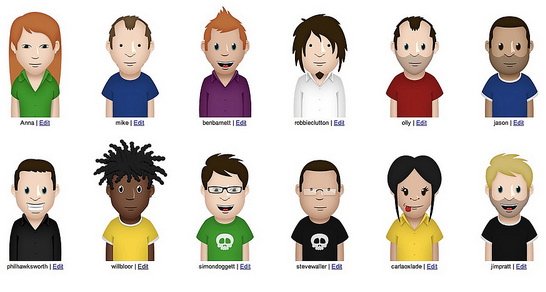English teacher Ana Maria Menezes uses web tool Voki with her high school students in Uberlandia, Brazil, and said she has watched them become more comfortable speaking English when it’s not really “them” doing the talking. Voki, a free education web app created by Oddcast, allows students and teachers to create their own talking character - they can be historical figures, animals, or a person that looks just like the user.
[RELATED READING: Can an Online Game Crack the Code to Language Learning?]
Teachers and students can give their character a voice by using one of three methods: text to speech, recording by microphone, or uploading their own pre-recording audio file. Voki characters can speak in over 25 languages, and 150-plus voices, according to Eric Kiang, Voki’s Product and Marketing Manager.
Menezes has students record themselves speaking English, and then has them play it for the class on a computer, using their avatar.
“Most of my students were very embarrassed when asked to record their voices while speaking English; many of them had never actually heard themselves using a foreign language,” she said. But students felt more comfortable watching their avatar speak for them. “It has to do with the ‘hiding behind the mask’ effect: when we speak behind a mask, it's as if you're another character, you're safer and less exposed.”
Middle and high school Spanish and German teacher José Picardo doubts that using avatars alone causes dramatic improvements in learning a new language. “But I do think that incorporating tools such as Voki into the teaching and learning that goes on in my classroom, and practices such as regular peer-assessment, has had a very positive influence in attainment.” Picardo puts all of his students’ avatars on the departmental blog at Nottingham High School in Nottingham, UK, where they can be used by teachers, parents and students both as a showcase of student work as well as for peer review and assessment.
For Menezes, the most important use of digital avatars is the ability to get students doing more speaking outside the classroom. “Years ago, it was unthinkable to assign speaking homework to EFL or ESL students; all we could expect from them at home was to complete written exercises or write texts. Speaking practice was only possible in the classroom, and that meant very little practice for students who have no contact with English outside their school. Using an avatar for both for listening and for speaking purposes, I clearly noticed several improvements in their language use: Students were braver when expressing themselves and were also able to observe their pronunciation for the first time.”
One drawback teachers mentioned is the learning curve to use the apps; Second Life’s virtual world recommends that students be 16 to use it. Menezes mentioned there is a ramp-up time to using Voki, too, and that students need access to good recording equipment and fast Internet connections to get started. But even with learning curves, the technology is intuitive and tech-savvy students catch on quickly.
“Is there such a thing as a non-techie 13-year-old?” joked Picardo. “It could be argued that using these tools ensure that we are teaching children a range of skills that are necessary for later life, not just foreign languages.”
Even for the non-techie school setting, though, there's another option. Wake Forest Latin teacher-scholar Ted Gellar-Goad developed an original pen-and-paper avatar game for his Latin prose composition students. Students role-play and interact in ancient Rome, in the spirit of Dungeons and Dragons, and the game is meant to help students stay engaged and have fun performing the arduous task of writing difficult Latin sentences.
For the imaginative teacher, there's always a way.


